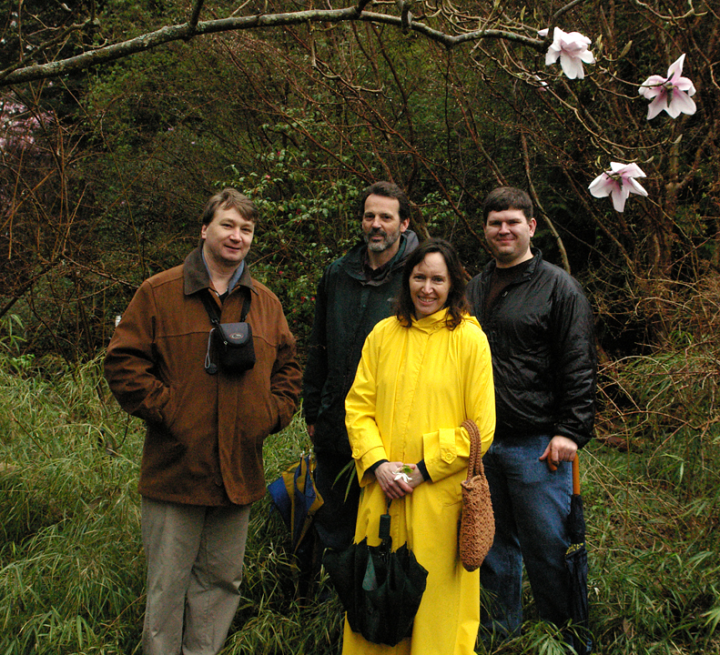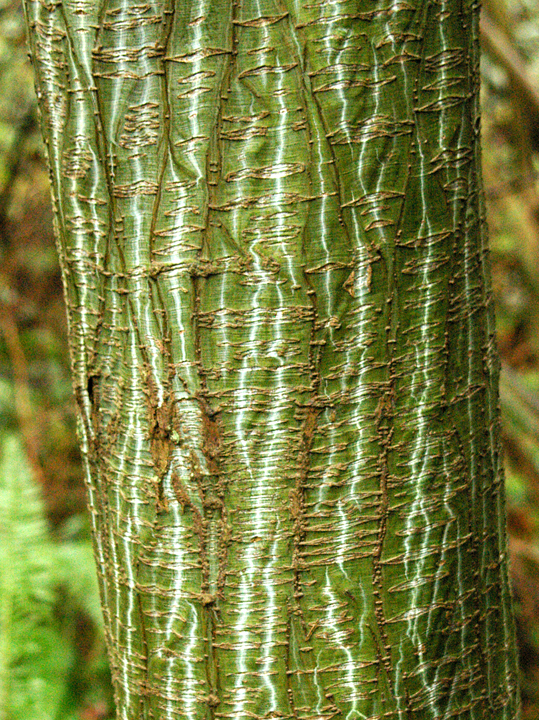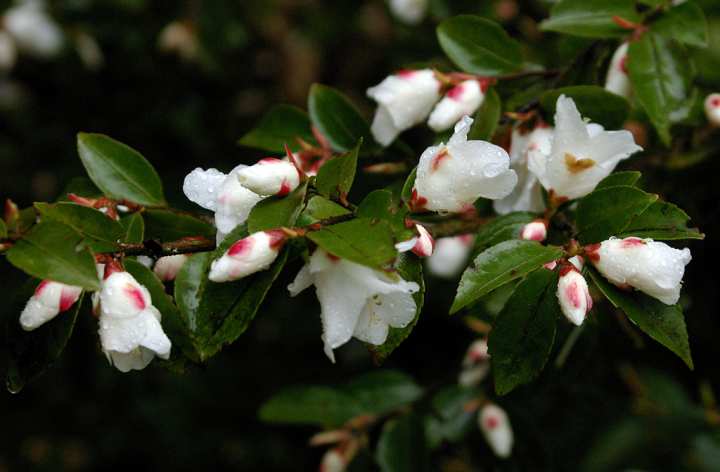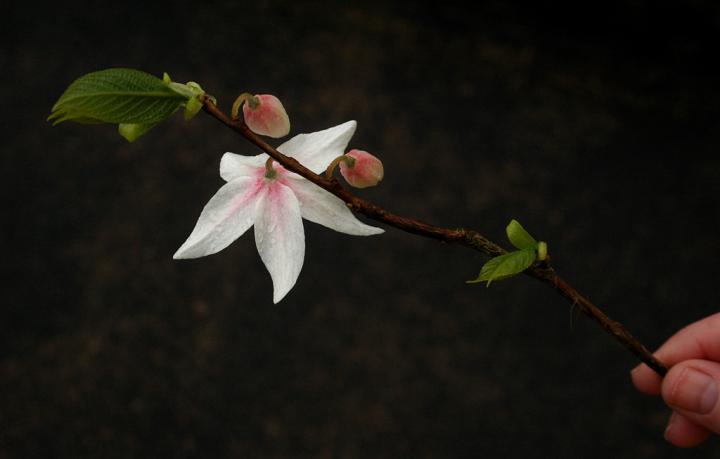
What happened was, an unexpected email from Quentin Cronk led us to a feast of flowers, which may spill slightly onto the Net. This gig comes with fringe benefits, you betcha. While over-long, this fragment has a picture of a very beautiful flower that almost nobody’s ever seen.
Dr. Cronk is Director of the UBC Botanical Garden (which has appeared here before). His note said:
My apologies for contacting you out of the blue. The garden’s bioinformatics/web manager, Daniel Mosquin, who reads your weblog, noticed that you had mentioned our Garden in one of your posts, which emboldened us to contact you.
On our website we have tried, in a simple way, to develop a virtual community of plant enthusiasts and disseminate information to illustrate the importance of taking plants seriously (or have an impoverished world — in all senses).
However, we are now examining options for real innovation about how information and people can interact on the web to increase understanding of plants. We would like to “push the envelope” and do really new things.
Would you be prepared to visit the Garden as our guest when the Magnolias are in bloom? I would like to give you a personal tour of the Garden and explain what we are trying to do, now we are coming out of the doldrums of the last few years. Then perhaps over lunch we could ask you for your reactions, as an IT professional, to our more radical e-plans.
How could one say no? On the day, it was grey and cold and wet but we hardly noticed; our hosts were delightful and the March blossoms a feast for the eyes and soul; we toured almost all of the Asian garden which features, along with the magnolias, rhododendrons, camellias, and other delights, including the flower that gives this fragment its title.
The magnolias were great, but big trees full of pink flowers are damn hard to photograph on a dark day; the only picture that gives a bit of an idea is the group shot.
Quentin Cronk, Douglas Justice, Lauren Wood, and Daniel Mosquin, with magnolia blossoms.
On those blossoms, here is the word from Doug Justice, who’s Associate Director, Curator of Collections, and Research Scientist: “The magnolia under which our photos were taken is Magnolia sargentiana var. robusta.” This picture gives you some feeling for the size both of the magnolia trees and the blossoms on them; the Botanical Garden specializes in the original plant strains, mounting what must be fairly heroic collecting expeditions to the remote provinces of China where they originate. The picture doesn’t capture the range of magnolia colours, from purest Sir-Galahad white to shocking brothel-curtain violet.
Quentin had a special affection for the Snakebark Maples:
Daniel Mosquin spotted this as Acer davidii, and Doug added:
The Acer davidii still displays good striping despite its age (about 30 years) All of the snakebarks are thin-barked and susceptible to damage and sunburn; they are best suited to light shade. In the wild (or if left to their own devices, which nurseries and most gardeners are loath to do) the trees are multi-stemmed and the branches arch right to the ground and self-shade. There is a particularly good specimen of A. davidii at Riverview Arboretum that shows this habit. Tim, your image shows the developing “diamond bark” pattern that will eventually obscure the vertical striping.
My second-favorite flower was a rare Japanese camellia:
Did I mention it was raining?
Daniel Mosquin identified this as Camellia transnokoensis.
We were walking down a wet path, grey overhead and wet green either side, when Doug muttered something about “I’m going to get a piece of the <mumble>”, and plunged into dripping undergrowth, emerging in a minute with this, which you really might want to enlarge.
Melliodendron Xylocarpum.
This is a real rarity; only 132 matches on Google, only one decent picture, and as of this writing no Wikipedia entry (but maybe that’ll be fixed by the time you get here). But is it beautiful, or what? Lauren and I want one, which may require a trip to Southern China.
Over lunch, we talked about how the Net might be used to benefit the Garden and the community. Lauren and I and the botanists bounced some ideas around and maybe some of them will work out, but we’ll let the Garden do the talking.
Well, I do hope to see one particular short-term result. As anyone who reads ongoing knows, we have a magnolia in the front garden that I love perhaps more than is healthy. We asked if the Garden guys could perhaps identify it, and Doug wrote back:
The blog images are great (Anticipation and Faunality), particularly the “Stop flowering trees!” In spite of your nice picture, have to admit to disliking purple leaf plums (Prunus cerasifera Nigra) en masse once in full leaf (too dark—funereal, as my mother would say). The magnolia is beautiful and probably a modern hybrid, not a M. x soulangiana type. That means I’m off the hook, as I don't pretend to know the newer ones. It is possibly one of the “girl magnolias” (I don’t make these things up). Well, to be honest, I do make some things up, but that's another story.
[Link Doug’s]
Does that man need a blog or what? Stand by.
And if you’re in or near Vancouver, go visit the garden already.



